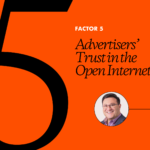Everyone is talking about Artificial Intelligence. Every other company is now claiming it has a unique Artificial Intelligence offering or that they are AI-driven, which is starting to cause “AI fatigue” amongst stakeholders trying to build their data and AI solutions for business strategy.
Therefore, it’s important to make a strategic assessment of any AI-driven business.
Three things to look for in an AI solutions for business strategy
In this post, I’ll present the three strategic elements you should be looking at when evaluating the core strengths of an AI business or solution.
Having all of these three elements is what creates a truly unfair advantage for a business, which is what you should be looking for. A true unfair advantage is something that cannot be easily created, copied, or bought by competitors.
Deep domain knowledge
Domain knowledge is the knowledge of the field that the data belongs to. Companies that have successfully built AI solutions for business may not often have the best AI talent or cutting-edge algorithms.
It is their domain expertise that provides them with a better picture of the business problems faced in their niche domain as well as the knowledge on the data inputs (features) required to achieve high quality and relevant results.
People in the trenches of AI know that once you have the data, it’s all about engineering the most effective data features before processing it with algorithms. Combining domain expertise with data science results in what I like to call “killer features.” These are usually features that one could not think of without having deep niche domain knowledge and result in a big uplift in the solution performance.
The depth of domain expertise can also be identified by looking for domain-specific flows within the product as well as the existence of a data model as part of the solution. You should also find domain experts amongst the company leadership.
The best algorithms
AI Research is undergoing impressive achievements such as DeepMind’s recently revealed Agent57, the first deep reinforcement learning (DRL) agent able to outperform the standard human benchmark in all 57 Atari games.
Having an algorithmic edge is a pretty straightforward advantage, however, machine learning is expected to become the next great commodity. The costs associated with running advanced algorithms are decreasing quickly alongside the rise of AutoML Frameworks such as PyCaret and FastAI which enable running advanced machine learning processes with a couple of code lines. This makes it a lot tougher to have a true algorithmic advantage, so value those who can show recent research proof against industry benchmark data sets.
First-party data
Data is the new oil. The ability to collect and organize high-quality usable data is the key to getting the highest quality results. With the rise of data privacy laws and increased concerns from consumers about how their data is shared, many web browsers have begun a phased removal of third-party cookies.
The biggest player to move in this direction, Google—representing about 66% of global desktop browser market share — announced earlier this year that their complete phase-out of third party cookies would be completed by 2022. With that deadline in mind, the clock is ticking for businesses to create or expand their first-party data strategy. Doing so now can become the biggest unfair advantage a business could gain as cookies go away.
First-party data is data that you collect directly from your users. It has major benefits over third-party data. As an example, in the media world, publishers already have a powerful source of first-party data: their communities. The more users interact within the publisher’s community, the more valuable insights can be derived to create better experiences for them, increasing key metrics like time on site.
Furthermore, if publishers get their first-party data right, it makes it easier to align the right advertisers with their users, creating a contextualized ad experience that ensures better targeting. For publishers, first-party data can even help inform their editorial strategy, with insights on trending topics and overall engagement.
Ultimately, a first-party data strategy will enable businesses to derive the highest quality AI-driven insights needed to drive lasting loyalty and retention.
Summing it up, evaluate if a business has a true AI-Moat by looking at 3 key elements: deep domain knowledge, proof for having an algorithmic edge, and a first-party data strategy. The combination of all three elements is rare—but when exists, creates a truly unfair advantage.
I’m hiring a data engineering team lead, product data analysts, and data scientists. Want to join us at OpenWeb? DM me on Linkedin.


